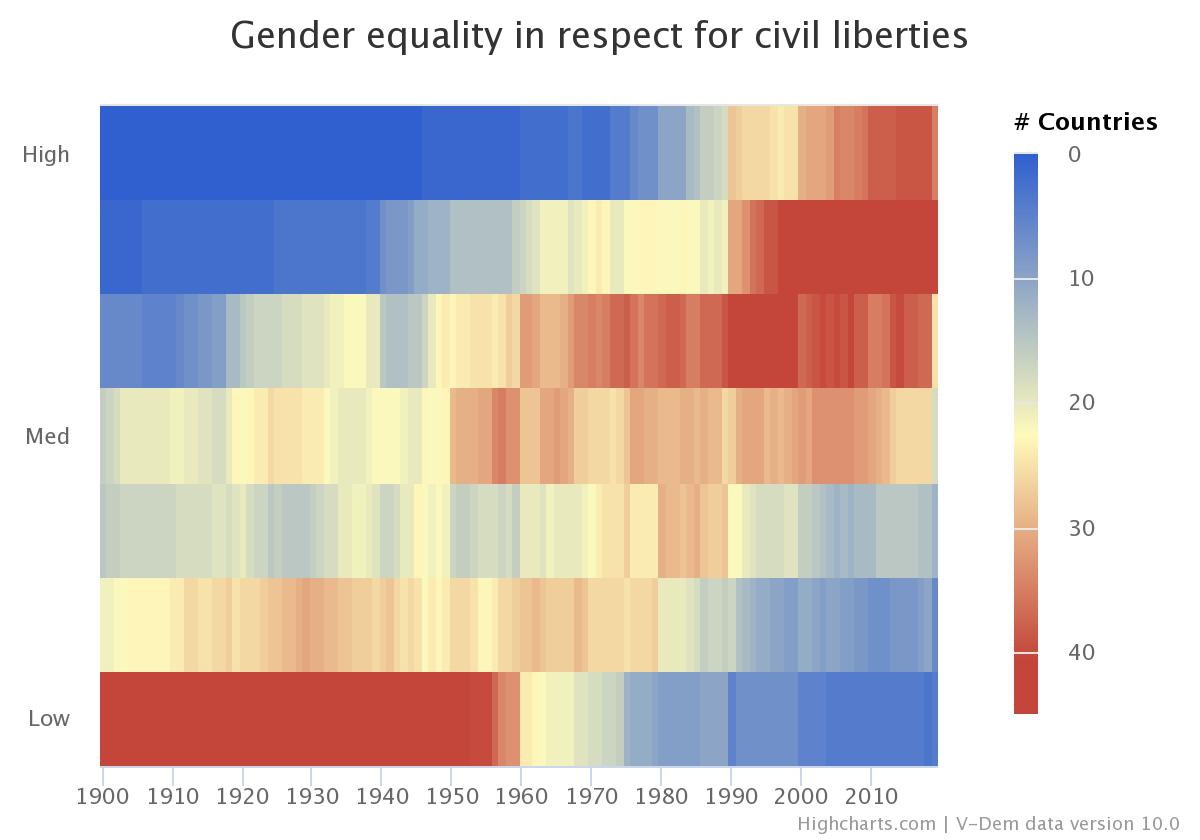Women’s Civil Liberties Worldwide: Much Achieved, More to Do
By: Ana Laura Ferrari
Oct 06, 2020
Ruth Bader Ginsburg, US Supreme Court Justice, died on September 18. She was fundamental for the comprehension that dissimilar treatment between men and women is unconstitutional. Her life achievements paved the way for women's rights in the United States. Fortunately, the world she witnessed at the end of her life is more equal than it was in 1933 when she was born. However, much remains to be done.
V-Dem data allows us to trace advances in women's rights around the world. For example, the V-Dem indicator Gender equality in respect for civil liberties quantifies the extent to which women enjoy the same level of civil liberties as men. It measures women's access to justice, private property rights, freedom of movement, and freedom from forced labor.
The graph below shows the evolution of gender equality in relation to civil liberties from 1900 to 2019 for all countries. Vertically, the graph is divided into seven categories that go from low to high scores in civil liberties. The colors represent the number of countries in each category, from 0 (blue) to more than 40 (red).
In the graph, we can see that, until the 1960s, most countries fell in the lowest category and gender inequality permeated all areas of society. Women had to mobilize to gain equal rights to vote, education, and financial independence. In the UK, women could study in universities like Oxford and Cambridge since the late 1800s. However, they could not graduate. Oxford just conferred degrees to women in 1920, and Cambridge followed the same path only in 1957. In the United States, until the mid-1970s, financial institutions openly discriminated against clients based on gender, denying credit cards and loans to women.
Starting in the 1960s, the red bars on the graph start to go up – meaning that women's civil liberties were being secured in more places. By the 1990s, more countries were classified among the medium and high categorization of women's civil liberties. In sum, after a wave of progress beginning in the 1960s, women's rights expanded over the last decades.
Despite significant improvement in many aspects, gender inequality is a pressing issue in the 21st century. From gender bias in hiring to unpaid domestic work, women are frequently disadvantaged. In two-fifths of countries worldwide, they cannot inherit or own property. In Latin America, women's poverty is higher than men's. In poor and wealthy countries alike, women and men are not entitled to the same paternity/maternity leaves, which puts women in a worse labor market position. It is not a coincidence that one of the United Nations' sustainable development goals is achieving gender equality and empowering all women and girls until 2030.
Gender equality in respect for civil liberties improved in the last century. However, there is still a long way to go. The V-Dem project has data on these topics broken down by region and country. To learn more about gender equality, you can visit the Online Graphing in V-Dem website.


